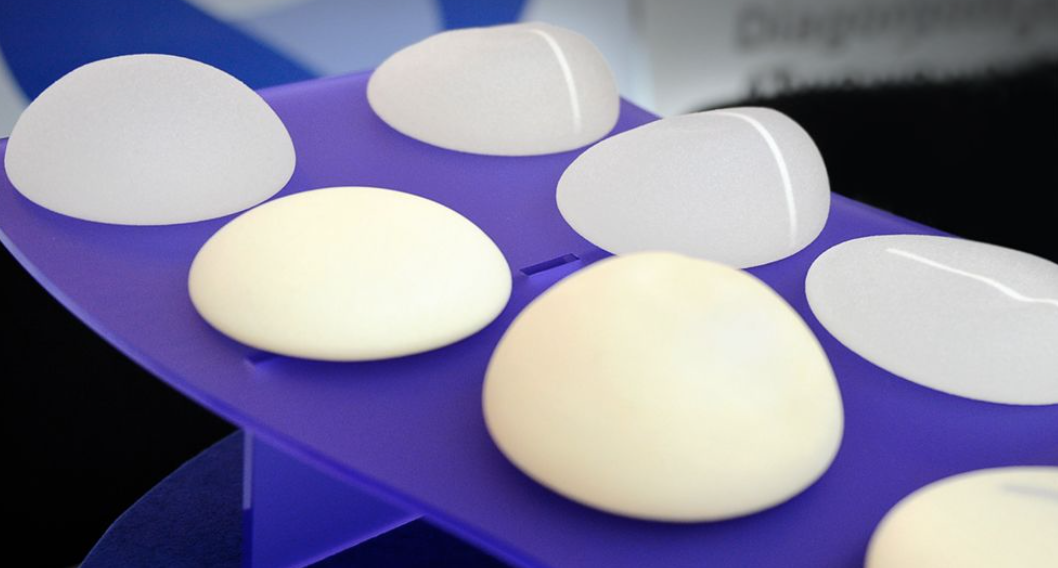
Breast Implant Safety: Updates and Resources
Concerns about the safety of breast implants have been all over the news lately, but the information presented is often confusing and can lead to more questions than answers. In order to really understand all of the information, it’s important to know some basics about breast implant safety (which many women are unfortunately not well-informed about before having implants placed!).
First, here are the main features of breast implants that impact their safety and outcomes:
Saline Versus Silicone
Breast implants can be filled with either silicone or saline, though both have a silicone shell on the outside of whichever fill type they have inside the shell. There are potential benefits and downsides to both- the most commonly described advantages of silicone are that they feel more natural and have less rippling, while some women prefer saline because of the ease of identifying rupture if it happens and greater overall peace of mind with saline implants.
Textured vs Smooth
The surface texture of an implant refers to properties of the silicone shell and basically comes in two types, “textured” (which has a rough surface that acts like Velcro with the surrounding tissue) and “smooth” (which has a completely flat surface that doesn’t interact with the surrounding tissue in a significant way).
The major benefit of textured implants is that the “Velcro effect” can hold implants in place better, which can allow surgeons to use shaped (“teardrop”) implants without worrying that they’ll rotate in the wrong orientation in the implant pocket, and also that the breast shape after augmentation or reconstruction with implants may be stable for a longer time because of the contact between the tissue and the implant.
Implant companies have different “levels” of texturing, which are designed to optimize patient outcomes but also appear to impact the risk of a rare form of lymphoma called Breast Implant-Associated Anaplastic Large Cell Lymphoma (BIA-ALCL- see below for more information).
Round vs Shaped
Implants come in two different shapes, round and shaped (also known as “teardrop”). Round implants can have smooth or textured surfaces, while shaped implants need to have a textured surface to prevent the rotation issue described above.
Prior to finding out about the link between implant texture and BIA-ALCL (see below for more information), decisions around implant shape were entirely related to patient goals for their breast/reconstructed breast appearance, but now concerns around texturing have led many surgeons to recommend smooth implants exclusively, and thus fewer shaped implants are being used (at least in the U.S.)
Within the different implant shapes there are also different levels of projection and implant width and height, which also impact the overall look to the breast after augmentation or reconstruction, but don’t impact the safety profile.
Implant Manufacturer
There are a small number of breast implant manufacturers in the U.S., and all have different proprietary processes for how they make their implants, which can affect their long-term outcomes as well as potential risks from the implants. All of the implant companies collect data on outcomes with their own implants, but there are really not any great studies comparing different implant types to each other.
Surgeons usually have specific reasons for using a particular implant type, and some many use more than one type, so it’s good to ask why your surgeon prefers one type over the other and how they make their choices.
After you have breast implants placed, you should receive an implant card that contains all of the information listed above (although depending on the manufacturer or age of your implants, you may have to look up your implant type to find out about the shape and texturing). If you don’t still have the card (or never received one), your plastic surgeon’s office should be able to give you a copy.
Next, here’s what we know and don’t know about breast implant safety and BIA-ALCL as of this publication date (April 2019):
- The risk of getting lymphoma following breast implant placement for cosmetic or reconstructive reasons is very low. Reported lifetime risk in the U.S. for women with textured implants ranges from 1 in 3,800 to 1 in 30,000. Hundreds of thousands of breast implants are placed every year, but to-date only 457 unique cases have been reported to the FDA.
- BIA-ALCL can be treated and cured when discovered early. The typical signs of BIA-ALCL are late swelling in the breast around the implant (usually 2 or more years after surgery) or a mass in the breast near the implant. If these kinds of symptoms occur, women should be evaluated by their plastic surgeon as soon as possible. Depending on the findings, patients may require imaging of their breast and a possible biopsy or drainage procedure. Once BIA-ALCL has been diagnosed, women will need to undergo surgery to remove the implant and the surrounding capsule as well as any breast masses. Surgery alone is very effective for treating the lymphoma in most patients, though some patients will need chemotherapy or radiation therapy if the disease is more advanced. Death from BIA-ALCL is extremely rare (17 cases reported worldwide) and all occurred after significant delay in diagnosis and treatment and without getting appropriate targeted therapy.
- Plastic surgery organizations, implant manufacturers, and the FDA are working together to collect more information to better understand BI-ALCL and learn how to prevent it in the future. The American Society of Plastic Surgeons and the American Society for Aesthetic Plastic Surgery, as well as implant manufacturers, have been actively working in conjunction with the FDA (including a recent two-day hearing) to track all cases of BIA-ALCL and collecting as much clinical information as possible to try to determine the specific risk factors for BIA-ALCL and the safest implant options for women. Research is also being done to investigate genetic and other patient factors that may make patients more susceptible to developing BIA-ALCL if they do have breast implants.
- There have not been any recommendations from any plastic surgery organization or the FDA for asymptomatic women who currently have breast implants to have them removed. The current recommendations for monitoring implants include regular imaging (current guidelines recommend MRI, but this may be changed to ultrasound) and routine follow-up with your plastic surgeon. I recommend yearly follow-up for all of my patients with breast implants, with earlier follow-up if any new breast symptoms such as pain, swelling, change in breast appearance, breast masses, or implant firmness develop.
Finally, here are some resources by topic that can help as you’re making decisions about implants or wondering about the risks of implants if you already have them:
BIA-ALCL
https://www.plasticsurgery.org/for-medical-professionals/health-policy/bia-alcl-physician-resources
https://www.plasticsurgery.org/documents/Health-Policy/ALCL/ALCL-Brochure-Trifold.pdf
https://www.mdanderson.org/cancer-types/implant-associated-anaplastic-large-cell-lymphoma.html
FDA Recommendations
Implant Manufacturer Data
https://www.natrelle.com/reconstruction



